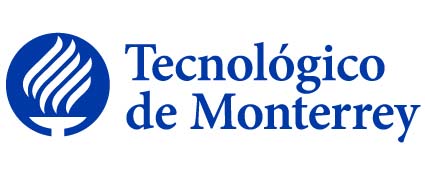
|
|||||
Disciplina asociada:Tecnología |
|||||
Escuela:
Preparatoria
|
|||||
Departamento Académico:
Tecnología Arte y Diseño Preparatoria
|
|||||
Programas académicos: |
|||||
Requisitos:Estar cursando al menos el periodo 3 |
|||||
Equivalencia:No tiene. |
|||||
Intención del curso en el contexto general del plan de estudios: |
|||||
|
Tecnología del diseño I es un curso básico que tiene la intención de introducir a los estudiantes de preparatoria al campo del diseño industrial, tanto en sus aspectos formales como prácticos. La intención del curso es formar a personas de mentalidad internacional cuya comprensión del diseño y del mundo tecnológico contribuya a la conservación del planeta y la satisfacción de sus necesidades. Como resultado del aprendizaje, los estudiantes desarrollarán hablidades de pensamiento crítico y de diseño que puedan aplicar en un contexto práctico, tomando en cuenta el aspecto ético. El producto final esperado es la creación de un proyecto de diseño, asistido por software especializado, que se materialice en un prototipo de para producción. |
|||||
Objetivo general de la Unidad de Formación: |
|||||
|
Al finalizar el curso, el alumno será capaz de: -Explicar detalladamente, de manera oral y escrita, conceptos básicos del diseño industrial. -Resolver teóricamente pequeños problemas que requieran la aplicación de conceptos básicos de diseño industrial en sus diversas etapas: análisis de necesidades, diseño conceptual, desarrollo de un diseño detallado y prueba y evaluación. - Analizar necesidades personales, locales y globales que requieran del uso del diseño industrial para su satisfacción, tomando en cuenta los aspectos ecológicos y éticos implicados. -Esbozar la propuesta factible de diseño de un modelo, prototipo, producto o sistema que resuelva una necesidad humana, tomando en cuenta los aspectos tecnológicos, ecológicos, económicos y éticos que estén implicados. |
|||||
Técnica didáctica sugerida: |
|||||
| Aprendizaje orientado a proyectos | |||||
Bibliografía sugerida: |
|||||
|
LIBROS DE TEXTO: * Peter Metcalfe & Metcalfe, Roger, IB Design & Technology, 2nd, Melton, Australia : IBID Press, 2015, eng, 9781876659196 * Winston, Morton & Edelbach, Ralph, Society, Ethics, and Technology, 4th, Boston : Cengage Learning, 2012, eng, 9780840033802 LIBROS DE CONSULTA: * Bowles, Cennydd & Box, James, Undercover User Experience Design, 1st, Berkeley : New Riders, 2010, eng, 9780321719904 * Gerzon, Mark, Global Citizens: How Our Vision of the World is Outdated, and What We Can Do About it, Londres : Rider, 2013, eng, 9781846042188 * Papanek, Victor J., Design for the real world : human ecology and social change, 5th, Boston : Cengage Learning, 2012, eng, 9781133943556 * Webster, Ken & Craig Johnson , Sense and Sustainability: Educating for a Circular Economy, 2010, Ellen MacArthur Foundation, 2010, eng, 9780955983108 |
|||||
Perfil del Profesor: |
|||||
|
(140101)Licenciatura en Ingeniería ; (143601)Maestría en Ingeniería de Manufactura ; (500499)Maestría en Diseño y Artes Aplicadas CIP: 140101, 143601, 500499 Experiencia recomendada: Docencia en el Bachillerato Internacional, en diseño industrial y/o tecnología de los materiales. |
|||||
|
|||||
Discipline:Technology |
|||||
School:
High School
|
|||||
Academic Department:
Technology Arts and Design High School
|
|||||
Programs: |
|||||
Prerequisites:period 3 |
|||||
Equivalences:None. |
|||||
Course intention within the general study plan context: |
|||||
|
Design Technology I Standard Level is a basic course intended to introduce high school students to the field of industrial design both in its formal as well as in its practical aspects. The course aims to develop internationally minded people whose understanding of design and the technological world contributes to preseve the planet while satisfying its necessities. |
|||||
Course objective: |
|||||
|
At the end of the course, the student will be able to: - Explain in detail, verbally and in writing, industrial design basic concepts. - Solve theoretically small problems that require applying basic industrial design concepts in its different steps—analysis of necessities, conceptual design, development of a detailed design, and testing and evaluation. -Analyze personal, local, and global necessities that require the use of industrial design for their satisfaction, taking into account ecological and ethic aspects that are involved. - Sketch a feasible design in the form of a model, prototype, product or system intended to resolve a human necessity taking into account technological, ecological, economic, and ethic aspects that are involved. |
|||||
Teaching and learning tecniques: |
|||||
| Learning-oriented projects | |||||
Suggested Bibliography: |
|||||
|
TEXT BOOKS: * Peter Metcalfe & Metcalfe, Roger, IB Design & Technology, 2nd, Melton, Australia : IBID Press, 2015, eng, 9781876659196 * Winston, Morton & Edelbach, Ralph, Society, Ethics, and Technology, 4th, Boston : Cengage Learning, 2012, eng, 9780840033802 BOOKS FOR CONSULTATION: * Bowles, Cennydd & Box, James, Undercover User Experience Design, 1st, Berkeley : New Riders, 2010, eng, 9780321719904 * Gerzon, Mark, Global Citizens: How Our Vision of the World is Outdated, and What We Can Do About it, Londres : Rider, 2013, eng, 9781846042188 * Papanek, Victor J., Design for the real world : human ecology and social change, 5th, Boston : Cengage Learning, 2012, eng, 9781133943556 * Webster, Ken & Craig Johnson , Sense and Sustainability: Educating for a Circular Economy, 2010, Ellen MacArthur Foundation, 2010, eng, 9780955983108 |
|||||
Academic credentials required to teach the course: |
|||||
|
(140101)Bachelor in Engineering and (143601)Master Degree in Manufacturing Engineering and (500499)Master Degree in Design and Applied Arts CIP: 140101, 143601, 500499 Recommended Experience: Having taught in the International Baccalaureate, Industrial Design, and/or Materials Technology. |
|||||